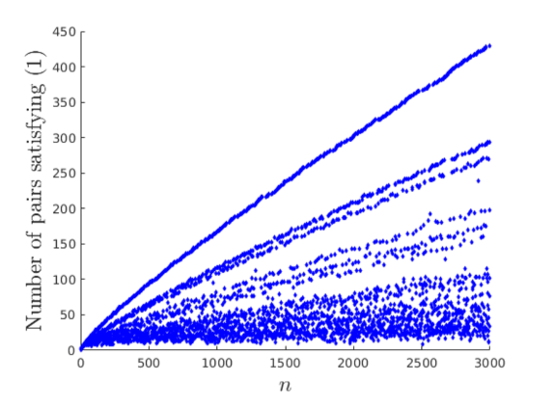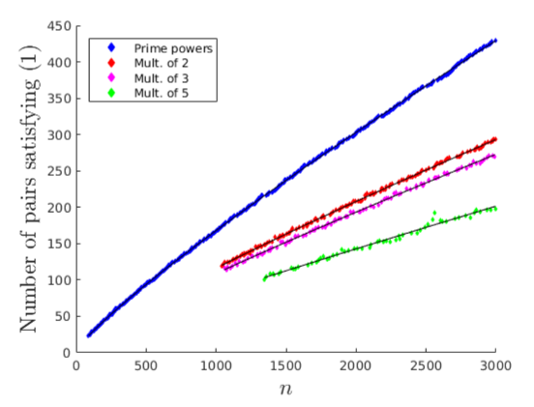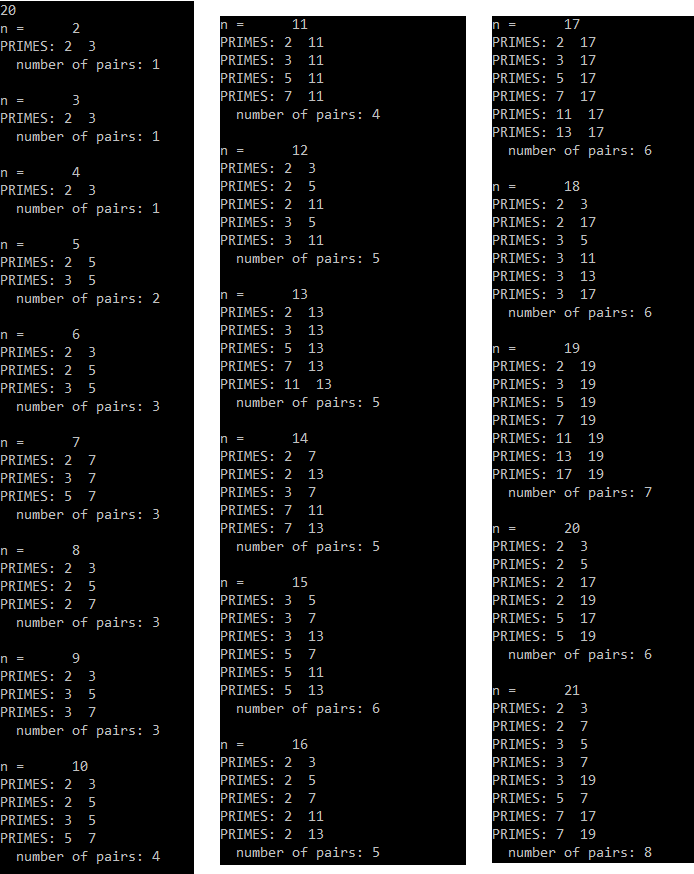LaTeX4Web 1.4 OUTPUT
In this section we study given n how many pairs of primes make n satisfy Condition 1. We have found computationally all the possible pairs of primes that satisfy Condition 1 with a given n £ 3000. The following figure shows the data for n up to 3,000.
LaTeX4Web 1.4 OUTPUT
We note four main tendencies. The one with the greatest slope corresponds to the one formed with prime numbers and prime powers. This is explained with the first proposition explained in the section "An open problem". Because only one prime is needed to satisfy Condition 1, the other prime can be any prime smaller than n. Therefore, this first tendency follows the function n/log(n), which describes the distribution of prime numbers. The second greatest slope is formed with even numbers that satisfy Condition 1 with 2. The third one is formed by numbers that satisfy Condition 1 with 3 and the following one with numbers that satisfy Condition 1 with 5. In order to fit a function for each curve, we approximated the function n/log n for each branch with Matlab, and we obtained the following functions:
Here we provide the code that we used to compute how many different pairs make n satisfy Condition 1.
Here you can see an example of the output of the code until n=21.




